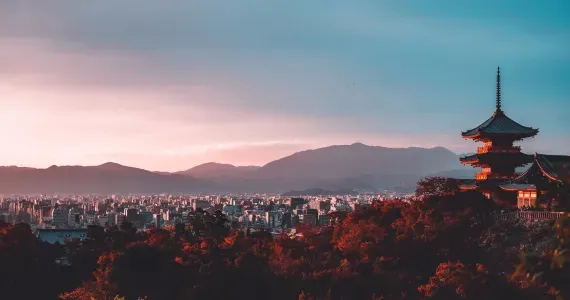How to get around Osaka during World Expo Osaka 2025
Osaka, a dynamic metropolis and Japan's third-largest city, is preparing to host the 2025 World Expo. This world-renowned event, to be held from April 13 to October 13 on the artificial island of Yumeshima, will attract millions of visitors from all over the world. For those planning to visit Osaka during this period, a clear understanding of the transportation options available to get around is essential to optimize your experience and avoid hassle.
1. The metro
Osaka's subway network is one of the most convenient ways to get around the city. With 9 lines serving various districts, the subway is both fast and efficient. Each line is color-coded. Operating hours are from 5am to midnight. Nearly 3 million passengers use this subway network every day.
The Chuo line in particular, will be crucial for access to Yumeshima Island, the exhibition site. For the occasion, this line is being extended to Yumeshima to offer direct access to the event site. Stations are well signposted in English, making them easy to navigate for international visitors.
The Osaka Metro uses a variable fare system similar to that of Tokyo. Unlike in France, where you buy a one-way ticket at a set price, the fare is calculated according to the distance traveled, with a minimum cost of 190 yen (€1.10). You can plan your journey in advance, including connections between metro and train, using tools such as Jorudan or Google Maps, which also display fares.
Please note:
- Osaka subway cards and Kansai train cards do not cover the full fare to Yumeshima stop.
- You must pay the fare between Cosmo Square and Yumeshima separately, in cash on the spot.
2. Bus
Although the subway is often preferred for its speed, Osaka's buses offer a practical alternative, especially for overground journeys that provide a better view of the city. Bus lines serve areas not covered by the subway, and can be particularly useful for reaching less accessible neighborhoods or sites.
Several shuttle buses will connect the main bus stations directly to the exhibition site, making travel even more convenient for visitors.
Tip: Buy a day pass for unlimited access to metro and bus lines, ideal for travelers.
Get your metro/bus pass!
3. Train
For those wishing to explore the surrounding regions, such as Kyoto or Nara, the JR West (Japan Railways) rail network is ideal. Trains are punctual and comfortable, quickly connecting Osaka to the main cities of the Kansai region. Osaka is also within easy reach of Tokyo by train, thanks to fast Shinkansen connections.
Holders of a JR Pass will be pleased to learn that JR also operates several lines in Osaka, including the JR Loop Line. This line circles the city with 19 stations, stopping at tourist sites such as Osaka Castle, Shitennoji Temple and Tennoji Park.
In addition, 2 lines link the city to Kansai International Airport (KIX ): JR Kansai and JR Kansai Airport Express Haruka. JR also operates lines from central Osaka to other major Kansai cities, such as Kyoto, Kobe and Nara, making it easy to explore the region. Finally, the JR Sakurajima line goes directly to Universal Studios Japan.
Tip: To explore Japan's Kansai region, consider regional passes that offer great value for rail travel. The Kansai Pass allows unlimited travel on local JR lines in major cities such as Kyoto, Osaka and Nara. This pass offers unlimited travel on JR lines and other local rail networks for a set period. You'll be able to explore Kansai economically and efficiently.
Discover the Kansai Pass!
Osaka's private train lines, such as Hankyu, Hanshin, Keihan, Kintetsu, and Nankai, play a crucial role in urban and intercity transport, complementing the public network. They offer fast, comfortable connections to key destinations such as Kobe, Kyoto, Nara, and Wakayama, as well as direct access to various tourist attractions. Thanks to frequent services and high-quality facilities, they make life easier for passengers by offering practical alternatives to public lines.
4. Car
For those who prefer to drive, renting a car can offer great flexibility. However, in Japan, not all foreign driving licenses are accepted without an official translation. This is the case for French and German licenses: you'll need to provide a certified translation of your license.
Tip: Reserve your vehicle and prepare the necessary documents in advance to avoid any hiccups!
Getting around Osaka during World Expo 2025 will be a rewarding experience, thanks to a variety of transportation options to suit all needs and preferences. The World Expo promises to be a memorable event, and good travel planning will help make your experience even more enjoyable.







